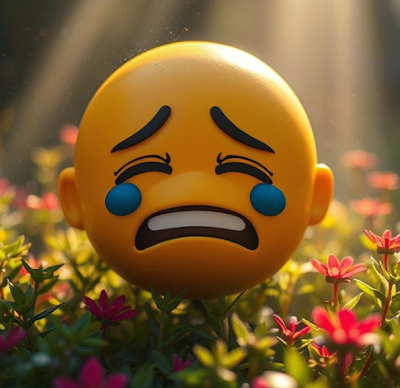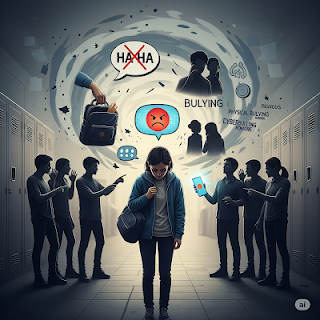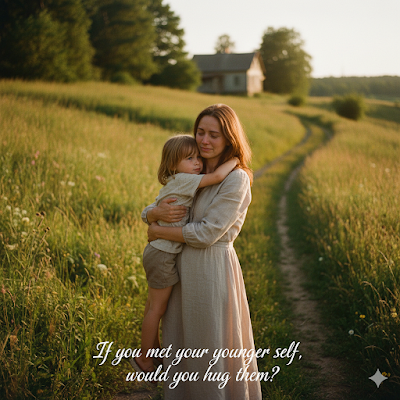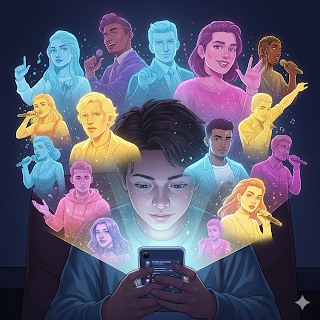From Crying Emojis to Dark Memes: Why Gen Z Laughs Through Stress
Intro: Why I Laugh When Life Hurts
Why do we spam the crying emoji 😭 like it’s punctuation, roast ourselves with dark memes, and laugh at TikToks that low-key scream “help”? It’s not because Gen Z can’t be serious—it’s because this is how we survive. The crying emoji is our nervous laugh in digital form. Memes? They’re our therapy sessions disguised as shitposts. What looks like “haha funny internet stuff” is actually our way of saying: I’m stressed, I’m tired, but I’m still here.
And it’s not random. Memes and emojis have a whole history. From the cursed Dancing Baby GIF in the ’90s, to rage comics, to the day became “Word of the Year” in 2015, humor has been evolving like a virus—but for us, it’s medicine. Psychologists even back it: dark humor lowers stress, boosts dopamine, and reframes trauma so it doesn’t eat us alive.
This isn’t just a thinkpiece. This is the breakdown of why Gen Z uses crying emojis, memes, and absurd humor to cope with stress and trauma—the psychology, the origins, and the emotional punch behind it. And yeah, memes won’t fix everything (we’ll drop real help lines at the end), but they do make the weight a little lighter.
So next time you see “this is fine” dog sipping coffee in a burning room, don’t think it’s just a meme. It’s the most honest autobiography Gen Z could’ve written.
Where Did Memes Even Come From?
Before we dive too deep into why we use memes for coping, let’s rewind. Believe it or not, memes existed way before TikTok edits and Twitter roasts. The word meme actually comes from Richard Dawkins’ 1976 book The Selfish Gene, where he used it to describe how cultural ideas spread like genes. Fast forward a few decades, and the internet picked it up, flipped it, and turned it into the digital language we know today.
Some of the earliest internet memes go back to the late ‘90s and early 2000s—think Dancing Baby (1996), Hamster Dance (1998), or All Your Base Are Belong to Us (2000). They were weird, clunky, and honestly kind of cursed compared to the sleek memes we scroll through now. But they laid the groundwork: simple images or videos with a funny twist that spread like wildfire across early internet forums.
By the late 2000s and early 2010s, memes exploded thanks to platforms like Reddit, 4chan, and eventually Facebook. Rage Comics with characters like Trollface and Forever Alone made it mainstream. Then came Doge, Bad Luck Brian, Overly Attached Girlfriend. Memes became internet currency—you weren’t just online; you were fluent in meme-speak. And when Instagram, Vine, and TikTok entered the chat? Boom. Memes weren’t just niche internet jokes anymore. They became culture itself.
Related: Parasocial Relations
Why Memes Hit Like Emotional Espresso
There’s actual brain science behind why that one meme can save your day. Humor drops cortisol (the stress hormone) and pumps dopamine like an emotional espresso shot. It’s the same chemical rush you get from blasting your comfort playlist at 1 a.m. and screaming the lyrics into your pillow.
I once read a study (Personality and Individual Differences, 2020) that said people who lean on humor during stress actually bounce back faster. I didn’t need a study to tell me that though—I’ve lived it. I’ve had nights where the only thing keeping me from crying myself into dehydration was sharing cursed memes with my best friend until 3 a.m. It’s therapy, but with pixelated punchlines.
Turning Trauma Into Memes We Can Actually Carry
Trauma’s heavy. Like carrying bricks in your backpack heavy. Memes don’t make the bricks disappear, but they shrink them into Lego blocks—still there, but manageable. Psychologists call this cognitive reframing. I call it “making the unbearable bearable.”
Think of the “No Thoughts, Head Empty” lockdown era meme. It didn’t just describe brain fog—it was brain fog in its purest form. Or the “Guess I’ll Die” skeleton shrugging like, “welp.” That meme let me laugh at hopelessness instead of drowning in it. It’s not that the pain vanishes. It’s that it becomes laughable enough to hold without breaking.
Memes Are My Group Chat Confessions
Let me confess something: sometimes sending a meme is the closest I get to saying, “I’m not okay.” It’s safer. Less heavy. Dropping a meme about spiraling at 3 a.m. tells my friends everything I’m feeling without a long paragraph or awkward vulnerability.
Think about the “Distracted Boyfriend” meme. On the surface, goofy stock photo. But when my friend sends me that edited version—me ignoring responsibilities while chasing Netflix—it’s not just funny. It’s them saying, “yeah, I see you, I feel that too.” And suddenly, I’m not alone in the mess. That’s why memes aren’t just jokes. They’re confessions in disguise.
Related: How to Stop Overthinking?
Dark Humor: Laughing at the Abyss
Dark memes are the ones that hit me in the gut—the “me after my 5th mental breakdown today” type jokes. They’re the laugh-then-pause memes. Psychology says people who enjoy dark humor often have higher emotional intelligence (Cognitive Processing, 2017). Which makes sense, because to laugh at the abyss, you have to stare straight into it.
But here’s the shadow side: sometimes humor becomes a mask. Psychologists call it maladaptive humor. If all I ever do is laugh at the pain, I risk never actually healing it. And that’s not just theory—the CDC Youth Risk Behavior Survey (2021) found 40% of teens feel persistent sadness, and 20% considered suicide. Those aren’t meme punchlines. That’s reality knocking hard. Humor helps us cope, but it can’t be the whole plan.
Why This Coping Style Is So Damn Gen Z
Older folks look at us laughing at apocalypse jokes and go, “wow, these kids are so detached.” Nah—we’re not detached, we’re overexposed. We’ve grown up doomscrolling through pandemics, climate disasters, political meltdowns, and skyrocketing student debt. Of course we use humor. What else is left when the news feels like a dystopian Netflix special?
The APA Stress in America Report (2022) says Gen Z is the most stressed generation alive. So of course we cling to memes—they’re fast, raw, global, and painfully relatable. Memes are like emotional Wi-Fi: they connect us instantly, no passwords required. Whether it’s the joyful “It’s Corn” kid cutting through the noise, or absurd chaos like “Me and the boys at 2 a.m. looking for beans,” memes are our way of saying: yes, the world is insane—but at least we’re laughing together.
Memes as Modern Storytelling and Collective Memory
One more thing people underestimate: memes are history books in disguise. They’re how we process events together. Think back to early COVID lockdowns. Sure, there were official headlines about rising cases, but what stuck with us? The Tiger King memes. The whipped coffee memes. The “nature is healing, we are the virus” memes. They became timestamps of how we felt during that time—not just what happened.
This is why memes are powerful coping mechanisms. They’re not only jokes but emotional archives. Years later, one glance at a meme can drag us back to the exact chaos, confusion, and weird solidarity of that moment. They’re collective therapy sessions dressed as punchlines.
Closing: Laughing as Lifesaving
Memes don’t fix trauma. But they patch the cracks long enough for us to breathe. They’re our digital proof that even when the world feels like it’s ending, someone else out there is laughing at the same absurdity. And that connection? That’s what keeps us alive.
So when I post that meme about burnout, or crying-but-make-it-aesthetic, don’t think it’s just a joke. It’s me saying: I’m hurting, but I’m still here. And if we can laugh together, maybe we’ll make it through this chaos after all.
Disclaimer:
This article is for educational and cultural discussion purposes only. While memes and humor can help people cope with stress, they are not a substitute for professional mental health support. If you or someone you know is struggling with persistent sadness, anxiety, or thoughts of self-harm, please reach out to a qualified mental health professional.
In the U.K., you can call Samaritans at 116 123 for free, any time, or visit samaritans.org
If you’re outside the U.K., check your local resources immediately—you don’t have to go through it alone.









Don't go too far – if a man who died around half a century ago, approximately in 1950, were to come into today's world, he would probably refuse to accept this society of human being as the real world. He might not acknowledge that despite being a natural creation, humans have astonishingly transformed into a digital creation. The writer has observed all these facts with great subtlety, which is truly commendable.
You have summarized the whole digital age in these words. Thanks for appreciation.
Great points covered!